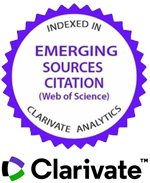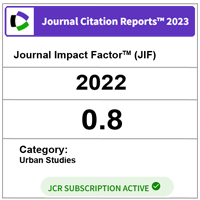FLEA MARKET TOURISM : A REVIEW OF MOTIVATION AND CHARACTERISTICS OF SPECIALISED TOURIST SEGMENTATION
DOI:
https://doi.org/10.11113/ijbes.v6.n1-2.383Keywords:
flea market tourism, motivation, specialised tourismAbstract
This is a conceptual paper address the opportunity of flea market as a trend which begins to receive recognition as one of tourism product; or in other word so called flea market tourism. Nowadays, flea market capturing attention as one of the weekend activities for visitor and tourist either inbound or outbound region. One of the most establish flea market in Malaysia and listed in booklet titled Malaysia Flea Market Galore is an indoor flea market in Amcorp Mall, Petaling Jaya. It has been selling antique, collectibles and used goods from various era. However, while the rise of flea market tourism has been understood in developed country, the research in the developed country such as Malaysia is still limited. Therefore, this paper attended to examine the factors relevant to the motivation of this specialised tourism market. Understanding of the characteristics of flea market in Malaysia context is very vital to flourish the maximum experience in order to allow the activities to occurred. As a result, variable for flea market in creating demand and the need to capture the market can be fully understood. The variable of factor discussed in this paper involve uniqueness of the market, variety of products, leisure activities, treasure-hunting, affordable items and local cultures. Thus, the distinctive features of the flea market tourism will be able to be promoted as a complete tourism product.References
Ackerman. D, & Walker. K., (2012). Consumption of Renao at a Taiwan Night Market. International Journal of Culture, Tourism and Hospitality Research. 6(3): 209-222.
Arnold, M.J., & Reynolds, K.E. (2003). Hedonic Shopping Motivations. Journal of Retailing. 79: 77-95.
Crompton, J.L., & Mc.Kay, S.L. (1997). Motives of Visitors Attending Festival Events. Annals of Tourism Research. 24(2): 425-439.
Dhruba, S. (2013) Research about Flea Market : Case Oranssi Kirppis in Varkaus. Degree Programme in International Business, Savonia University of Applied Sciences.
Ha, N.H. (2014). Buy, Sell and Chatter: A Case Analysis of a Lisbon Flea Market. Masters Degree in Economics, Nova School of Business and Economic.
Hyder Jaleel, & Wan Mohd Nazdrol Wan Mohd Nasir. (2015) Marketing to the Bottom of Pyramid - Consumer Behavior at Flea Market. In: The Proceedings of the 4th International Seminar on Entrepreneurship and Business (ISEB 2015). Faculty of Entrepreneurship and Business, UMK, pp. 492-467.
Lee, C.K., Lee, Y.K., & Wicks, B.E. (2004). Segmentation of Festival Motivation by Nationality and Satisfaction. Tourism Management. 25: 61-70.
Maisel, Robert. (1974). The Flea Market as an Action Scene. Journal of Contemporary Ethnography. 2: 488–505.
McCabe, A.S. (2000). Tourism Motivation Process. Annals of Tourism Research. 27(4): 1049-1052.
Mohr, K., Backman, K.F., Gahan, L.W., & Backman, S.J. (1993). An Investigation of Festival Motivations and Event Satisfaction by Visitor Type. Festival Management & Event Tourism. 1(3): 89-97.
Petrescu, M., & Bhatli, D. (2013). Consumer Behavior in Flea Markets and Marketing to the Bottom of the Pyramid. Journal of Management Research. 13 (1): 55-63.
Scott, D. (1996). A Comparison of Visitors’ Motivations to Attend Three Urban Festivals. Festival Management & Event Tourism. 3(3): 121-128.
Sherry, John F., Jr. (1990). Dealers and Dealing in a Periodic Market: Informal Retailing in Ethnographic Perspective. Journal of Retailing. 66: 174–200.
Sherry, J. F. (1990). A Sociocultural Analysis of a Midwestern American Flea Market. Journal of Consumer Research. 17:13-28.
Sherman, E., McCrohan, K. & Smith, J. (1985). Informal Retailing: An Analysis of Products, Attitudes, and Expectations, in E. C. Hirschman and M. B. Holbrook (Eds.). Advances in Consumer Research, pp. 204-208, Association for Consumer Research, 12, Provo, UT.
Tauber, E.M. (1972, October). Marketing notes and communications: Why do people shop? Journal of Marketing. 36: 37-42.
The Webster’s Dictionary (1995). Oxford : Oxford University Press. Uysal, M., Gahan, L., & Martin, B. (1993). An Examination of Event Motivations: A Case Study. Festival Management and Event Tourism. 1(1): 5-10.
Yuan, J., Cai, L.A., Morrison, A.M., & Linton, S. (2005). An Analysis of Wine Festival Attendees’ Motivations: A Synergy of Wine, Travel and Special Events? Journal of Vacation Marketing. 11(1): 37-54.
Zakariya K., Kamarudin Z., & Harun N.Z. (2016). Sustaining the Cultural Vitality of Urban Public Markets: A Case Study of Pasar Payang Malaysia. International Journal of Architectural Research. 10(1): 228-239.
Downloads
Published
How to Cite
Issue
Section
License
Copyright of articles that appear in International Journal of Built Environment and Sustainability belongs exclusively to Penerbit Universiti Teknologi Malaysia (Penerbit UTM Press). This copyright covers the rights to reproduce the article, including reprints, electronic reproductions or any other reproductions of similar nature.
Authors who publish with this journal agree to the following terms:
- This Journal applies Creative Commons Licenses of CC-BY-NC-SA
- Authors retain copyright and grant the journal right of publication with the work simultaneously licensed under a Creative Commons Attribution License that allows others to share the work with an acknowledgement of the work's authorship and publication in this journal.
- Authors are able to enter into separate, additional contractual arrangements for the non-exclusive distribution of the journal's published version of the work (e.g., post it to an institutional repository or publish it in a book), with an acknowledgement of its publication in this journal.
- Authors are permitted and encouraged to post their work online (e.g., in institutional repositories or on their website) prior to and during the submission process, as it can lead to productive exchanges, as well as earlier and greater citation of published work (See The Effect of Open Access).







